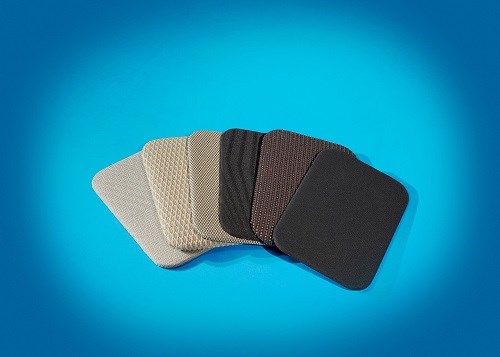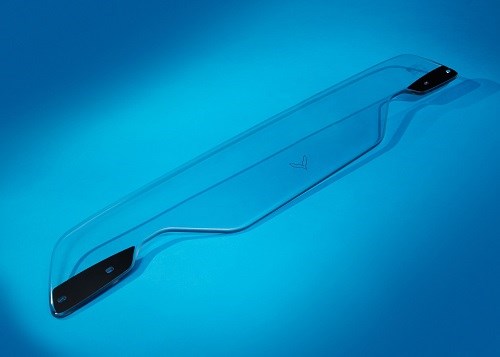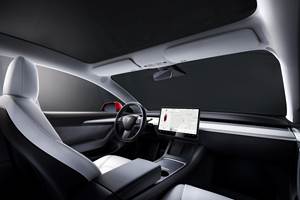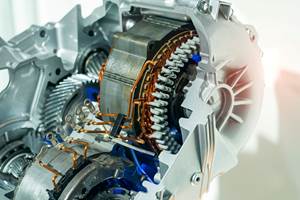SPE Auto Innovation Award Winners in Safety, Environmental, Aftermarket
Aftermarket category added to 2015 SPE Auto Innovation Awards
Take a look at the winners of three more categories of SPE Automotive Division’s 2015 Blue Ribbon Automotive Innovation Awards: safety, environmental, and the newly-added “aftermarket”. This is my third blog this week covering the grand award winners of each of nine categories. I do plan to blog about some of the finalists within some of those nine categories in the near future as their innovations also merit attention.

Safety: Floor Rocker Reinforcement
The 2015 Jeep Renegade SUV from FCA features an industry-first plastic-metal hybrid alternative to steel floor rocker reinforcements, which results in savings of 45% (2.2 lbs) in weight and 10% in cost. FCA worked with Italy’s tier one Proma Group and injection molder Redstamp Srl., and materials supplier SABIC, Houston, to develop this unique component.
The application involved a blend of two immiscible polymers—a PPE and a nylon 6—that resulted in a high-performance alloy. An optimized SABIC Noryl GTX 910 MPPE/PA 6 honeycomb geometry in this plastic/metal hybrid proved to be a very efficient energy absorbing crash-box structure in this floor rocker reinforcement. The result is a component that is E-coat capable (electrophoretic painting)--which offers high-corrosion resistance, but is also very easy to assemble into the vehicle’s BIW (body-in-white or shell). Because the plastic honeycomb is integrally attached to two steel flanges during injection molding, no structural adhesives are needed. In addition to the weight and cost savings, the hybrid innovation contributed tool savings versus the previous steel structures.

Environmental: Seat Fabric from Recycled Materials
The 2015 Ford F-150 pickup features the first application of a seat fabric made from a fiber that is a hybrid of 100% recycled materials—both post-industrial PET fiber and post-consumer water bottles. The OEM partnered with tier one Johnson Controls, Milwaukee, Wis., automotive body cloth manufacturer Sage Automotive Interiors, Greenville, S.C., and Repreve PET yarn manufacturer Unifil Manufacturing, Greensboro, N.C.
The fabric meets Ford’s design and comfort requirements without any compromise in quality, durability, or performance. Moreover, the switch from virgin fiber was achieved at cost parity, while providing significant environmental benefits, including the diversion of over 5-million water bottles from landfills in just one year. To help close the loop further, there are now PET bottle collection bins installed at the Ford Research & Engineering campus. The bottles are recycled to help form this fiber.

Aftermarket: Transparent Lightweight Wind Deflector
Designed for GM’s 2016 Corvette Stingray convertible sports car is the first use of a self-mounted, transparent and frameless wind deflector for convertible cars that meets AS2 ANSI and ECE requirements. This steeply raked design minimizes air turbulence and noise when the top is down. The OEM partnered with tier one Polytec FOHA, Warren, Mich., and materials supplier SABIC, Houston, which supplied a Lexan 9043 PC with Exatec 900-PC coating for the processing of the CNC-trimmed sheet.
This is the first-ever Exatec 900-PC glazing application of back glass, which is expected to lead into future back-lite integration of PC glazing. It was chosen because of abrasion and weathering resistance beyond traditional hard-coat. The SABIC technology lowered mass by 33% versus a glass design, and allowed a contoured shape to be achieved that would have been difficult and costly in glass. A laser-etched monogram under the surface is unobtrusive to vision during driving, yet visible during inspection, and it meets regulatory requirements for glass marking. A plasma coating enhances scratch, chemical, and UV resistance for a long use life.
Related Content
Impacts of Auto’s Switch to Sustainability
Of all the trends you'll see at NPE2024, this one is BIG. Not only is the auto industry transitioning to electrification but there are concerted efforts to modify the materials used, especially polymers, for interior applications.
Read MoreSPE Automotive Awards Applaud ‘Firsts’ and Emerging Technologies
The 51st annual SPE Automotive Innovation awards gave nods to several ‘firsts’ and added alternative vehicle systems category.
Read MoreMolder Repairs Platen Holes with Threaded Inserts
Automotive molder ITW Deltar Fasteners found new life for the battered bolt holes on its machine platens with a solution that’s designed to last.
Read MorePEEK for Monolayer E-Motor Magnet Wire Insulation
Solvay’s KetaSpire KT-857 PEEK extrusion compound eliminates adhesion and sustainability constraints of conventional PEEK or enamel insulation processes.
Read MoreRead Next
How Polymer Melts in Single-Screw Extruders
Understanding how polymer melts in a single-screw extruder could help you optimize your screw design to eliminate defect-causing solid polymer fragments.
Read MoreAdvanced Recycling: Beyond Pyrolysis
Consumer-product brand owners increasingly see advanced chemical recycling as a necessary complement to mechanical recycling if they are to meet ambitious goals for a circular economy in the next decade. Dozens of technology providers are developing new technologies to overcome the limitations of existing pyrolysis methods and to commercialize various alternative approaches to chemical recycling of plastics.
Read MoreTroubleshooting Screw and Barrel Wear in Extrusion
Extruder screws and barrels will wear over time. If you are seeing a reduction in specific rate and higher discharge temperatures, wear is the likely culprit.
Read More.png;maxWidth=970;quality=90)







.png;maxWidth=300;quality=90)


















